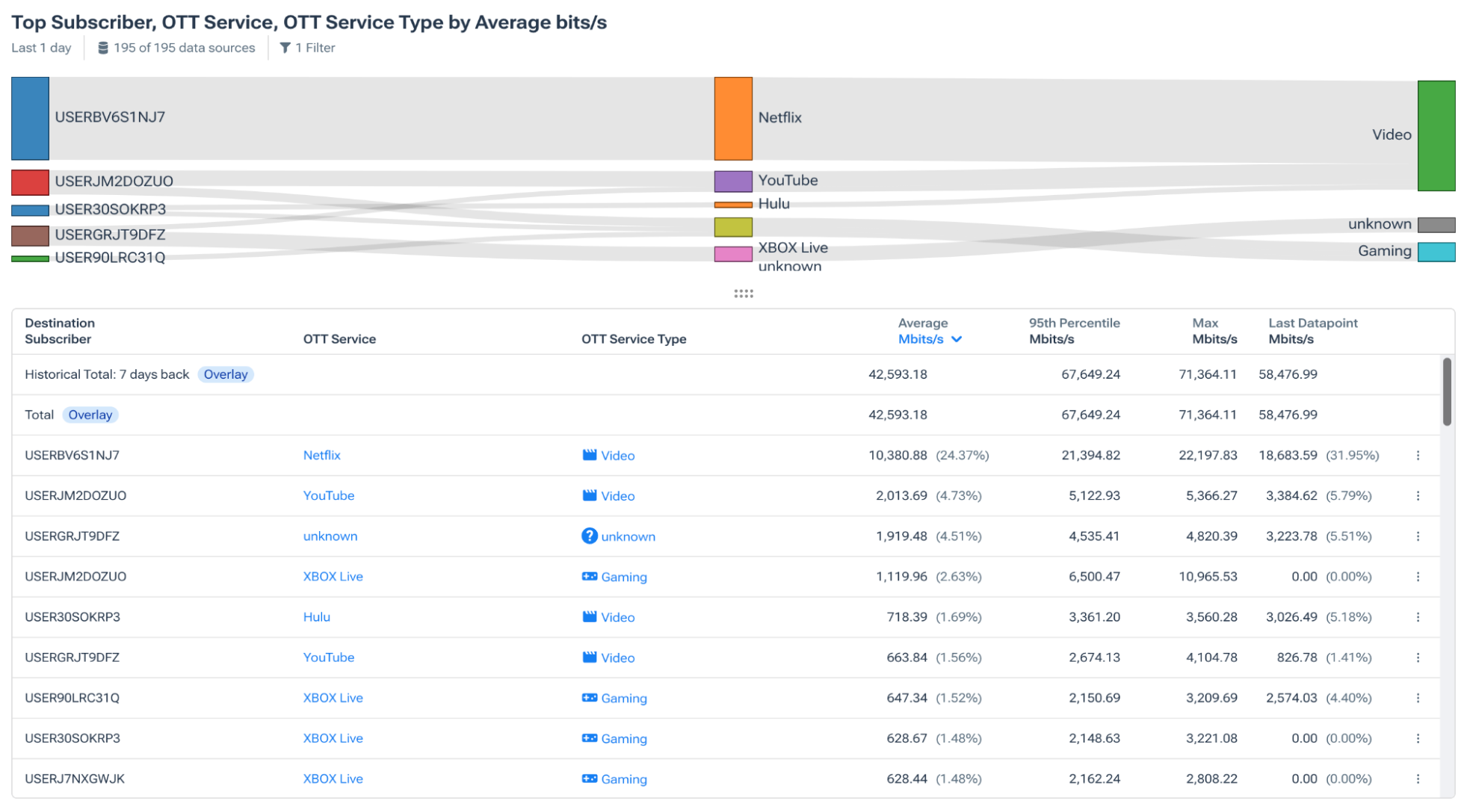Analyzing the Traffic Patterns of Broadband Subscriber Behavior

Summary
Broadband subscriber behavior analysis is the process of collecting and analyzing data on how broadband subscribers use the internet. This data can be used to gain insights into subscriber needs and preferences, as well as to identify potential problems with the broadband service.
Broadband subscriber traffic patterns and their sources
One of the most valuable insights that can be gained from broadband subscriber behavior analysis is an understanding of traffic patterns. The sources of the traffic data for a network operator vary, but common sources are deep packet inspection, various flow technologies like NetFlow or sFlow, and DNS log analysis.
By analyzing traffic patterns, broadband providers can learn a great deal about their subscribers’ needs and preferences. For example, suppose a large number of subscribers are using streaming video services during the evening hours. In that case, it is a good idea to work closely with the content providers to secure the traffic and develop service offerings for this customer segment.
Traffic patterns can also be used to identify potential problems with the broadband service. A typical use is recognizing when a subscriber has a higher demand that their service is dimensioned for.
Broadband subscriber insights from individual vs. aggregated data
Broadband subscriber behavior analysis can be performed at the individual level or the aggregated level. Individual-level analysis involves collecting and analyzing data on the online behavior of individual subscribers. Aggregated-level analysis consists of collecting and analyzing data on the online behavior of groups of subscribers.
Individual-level analysis
When we look into the data use of an individual subscriber, there is a wide range of applications for the insights.
Operational insights: Slow speeds or broken sessions can indicate issues with the subscriber’s last-mile connection or home Wi-Fi system. Malicious traffic from the subscriber often means that there are infected devices on the home network. All these types of information can be used to improve the customer experience proactively.
Marketing insights: Recognizing individual use patterns means the operator can tailor their marketing and direct existing offerings to the individual subscriber. For example, bundled streaming offers for a subscriber with a high use of video streaming or more bandwidth for a working-from-home professional with a high use of videoconferencing.
Aggregated analysis
Aggregated-level analysis can provide insights into the overall trends in broadband use.
Operational insights: Capacity planning is the poster child of the use cases. At the same time, the typical approach is to look at the total traffic in the network when planning topology and capacity, understanding what kind of traffic segments customers are using. That might be geographical segments or product segments. In any case, there might be an opportunity to optimize the capacity or the network topology for those segments.
Another use case is traffic engineering, where an operator can control different types of traffic in various manners.
Strategic insights: The aggregated analysis gives insights into trends in the services used. Emerging services can be tracked, the users of each are analyzed, and new offerings can be developed based on this information.
Regulatory compliance
The main concern once you start breaking down traffic per user is data privacy. The GDPR (General Data Protection Regulation) governs data protection within the EU and EEA. Instituted in May 2018, it superseded Directive 95/46/EC, aiming to empower users over their data and harmonize data protection laws across the EU.
For broadband providers, this translates to:
- Procuring explicit user consent before data collection or analysis.
- Granting users full access to their data, along with the right to deletion.
- Implementing robust measures to shield user data from unsanctioned access or misuse.
Additionally, global regulations like the California Consumer Privacy Act (CCPA) and the Brazilian General Law on the Protection of Personal Data (LGPD) echo similar mandates, underscoring the universal thrust towards stringent data protection.
What do you need to do with broadband subscriber analytics?
In summary, the essentials of subscriber analytics are
- Data collection and enhancements.
- Customer consent and anonymization
- Analytics
- Data protection and process
The Kentik Network Observability Platform provides an easy platform for analytics, data collection, and enhancements. Based on flow and DNS data collected from your network, the Kentik True Origin engine detects OTT services. The custom dimensions in the Kentik Data Engine allow for the enhancement of flow data with business dimensions such as anonymized customer IDs. Kentik provides the perfect foundation for aggregated and individual analysis of the traffic consumption of subscribers.

Conclusion
Broadband subscriber behavior analysis can be a valuable tool for broadband providers to gain insights into their subscribers’ needs and preferences, as well as to identify potential problems with the broadband service. However, it is crucial to be aware of the potential pitfalls of broadband subscriber behavior analysis, such as privacy concerns and discrimination. It is also essential to be mindful of the role of the GDPR in broadband subscriber behavior analysis.



